Ensuring Safety in Basement and Attic Spaces
When it comes to our homes, we often think about the living room, kitchen, and bedrooms, but what about those hidden nooks like the basement and attic? These spaces, while often overlooked, can harbor a variety of hazards that could compromise our safety. Imagine opening the door to your basement and being greeted by a musty smell, or climbing up into your attic only to find a precarious stack of old boxes. It’s essential to take a closer look at these areas to ensure they are safe and secure for everyone in the household. In this article, we’ll explore the common hazards found in basements and attics, discuss strategies for prevention, and outline best practices to keep these often-neglected spaces safe. So, let’s dive in!
Understanding the potential dangers in basements and attics is crucial. These spaces can present a unique set of challenges that, if not addressed, could lead to serious safety issues. For instance, poor ventilation can lead to a buildup of moisture, creating an ideal environment for mold growth. Mold isn’t just unsightly; it can also pose health risks, especially for those with respiratory issues. Structural problems, such as sagging beams or rotting joists, can also compromise the integrity of these spaces. It’s important to be aware of these hazards so you can take proactive measures to mitigate them. Here’s a breakdown of some common hazards:
- Poor Ventilation: Inadequate airflow can trap moisture and pollutants.
- Mold Growth: Damp environments are a breeding ground for mold.
- Structural Issues: Weak beams and joists can pose serious risks.
Proper ventilation is vital for maintaining air quality and preventing moisture buildup. Think of your basement and attic as the lungs of your home; without adequate airflow, they can become stagnant and unhealthy. Good ventilation helps to keep the air fresh and reduces the chances of mold and mildew taking hold. So, how can you ensure that these spaces are well-ventilated? Regularly check for any obstructions in vents and ensure that windows can open freely. Installing exhaust fans can also help improve air circulation, particularly in basements where humidity levels tend to be higher.
Mold can thrive in damp environments like basements and attics, making it crucial to implement effective prevention strategies. One of the most effective ways to combat mold is through humidity control. By keeping humidity levels below 60%, you can significantly reduce the likelihood of mold growth. Regular inspections of these spaces can also help catch any signs of mold early. If you notice any discoloration on walls or a musty smell, it’s time to take action.
Managing humidity levels is key to preventing mold. Consider using a dehumidifier in your basement or attic, especially during humid months. Additionally, improving air circulation can help keep moisture at bay. Here are some practical tips:
- Use dehumidifiers to maintain optimal humidity levels.
- Ensure that air vents are unobstructed to promote airflow.
- Consider installing a ventilation system if humidity remains a concern.
Routine inspections can help identify mold growth early. Make it a habit to check your basement and attic at least once every few months. Look for signs of moisture, such as water stains on walls or ceilings, and be vigilant for any musty odors. The earlier you catch mold, the easier it is to remediate. This proactive approach can save you time, money, and headaches down the line.
Ensuring the structural integrity of basements and attics is crucial for safety. When assessing these spaces, pay close attention to beams, joists, and overall stability. Look for any signs of sagging or damage that could indicate a serious issue. If you’re unsure about what to look for, consider hiring a professional inspector to assess the condition of these areas. Remember, a small issue can quickly escalate into a larger problem if left unchecked.
Fire hazards can be prevalent in attics and basements, making it essential to implement fire safety measures. One of the most critical steps you can take is to install smoke detectors in these areas. Smoke detectors are your first line of defense against fire, providing early warnings that can save lives. Additionally, proper storage practices are vital for reducing fire risks. Always store flammable materials away from heat sources and consider using fire-resistant containers for added safety.
Smoke detectors are critical for early fire detection. It’s important to install them in strategic locations, such as near stairways and in the center of the basement or attic. Don’t forget to test your smoke detectors monthly and replace the batteries at least once a year. Regular maintenance ensures that your detectors will function properly in case of an emergency.
Improper storage can increase fire risks. To keep your basement and attic safe, follow these guidelines:
- Use plastic bins instead of cardboard boxes to store items.
- Keep flammable items, like paint and cleaning supplies, away from heat sources.
- Avoid overloading electrical outlets with too many devices.
Being prepared for emergencies is essential in basements and attics. Creating an emergency plan tailored to these spaces can make all the difference in a crisis. Think about escape routes, and ensure that everyone in your household knows how to get out safely. Additionally, having essential supplies on hand can be a lifesaver during emergencies. Consider keeping a first aid kit, flashlight, and non-perishable food items easily accessible.
A well-thought-out emergency plan can save lives. Sit down with your family and discuss what to do in case of a fire or other emergency. Designate safe meeting spots outside the home and ensure everyone knows how to get there quickly. Role-playing different scenarios can also help everyone feel more prepared and confident in their ability to respond.
Having the right supplies can make a difference in emergencies. Here’s a list of essential items to keep in your basement and attic:
- First aid kit
- Flashlight with extra batteries
- Non-perishable food items
- Water bottles
Q: How often should I inspect my basement and attic?
A: It’s recommended to inspect these spaces at least once every few months to catch any potential issues early.
Q: What should I do if I find mold in my basement?
A: If you discover mold, it’s important to address it immediately. Small patches can often be cleaned with a mixture of water and detergent, but larger infestations may require professional remediation.
Q: Are smoke detectors required in basements and attics?
A: Yes, it’s highly recommended to install smoke detectors in these areas as part of your fire safety measures.
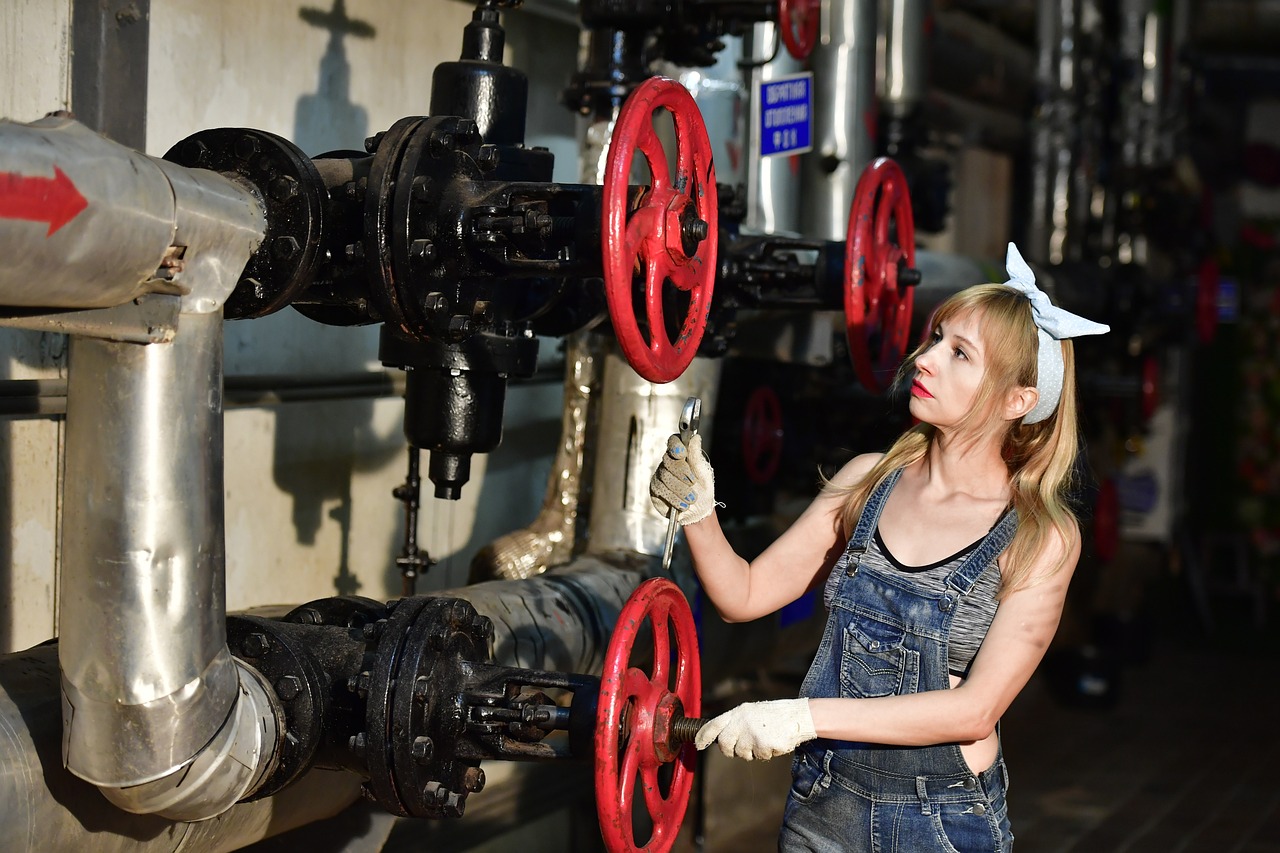
Identifying Common Hazards
When it comes to basements and attics, many people often overlook the potential hazards lurking in these spaces. It's crucial to understand that these areas, often hidden from daily view, can harbor dangers that may compromise the safety of your home and its occupants. For instance, one of the most common hazards is poor ventilation. Without adequate airflow, these spaces can become breeding grounds for moisture, leading to mold growth and structural issues. Imagine walking into your basement and being hit by a musty odor—that's a telltale sign that something isn't right!
Another significant hazard is mold growth. Mold thrives in damp, dark environments, making basements and attics prime locations for its development. Not only can mold damage your property, but it can also pose serious health risks, especially for individuals with respiratory issues or allergies. It's essential to keep an eye out for any signs of mold, such as discoloration on walls or a persistent damp smell. Regular inspections can help catch mold before it becomes a bigger problem.
Furthermore, structural issues are another concern that should not be ignored. Over time, the beams and joists that support your home can weaken due to moisture, pests, or general wear and tear. If you notice sagging ceilings or cracks in the walls, it may be time to call in a professional to assess the situation. The last thing you want is for a structural failure to occur, putting your family at risk.
In summary, being aware of these hazards is the first step in ensuring the safety of your basement and attic. Regular checks for ventilation, mold, and structural integrity can help you maintain a secure environment for your home. Don't let these often-overlooked areas become a source of danger; take proactive measures to keep them safe!
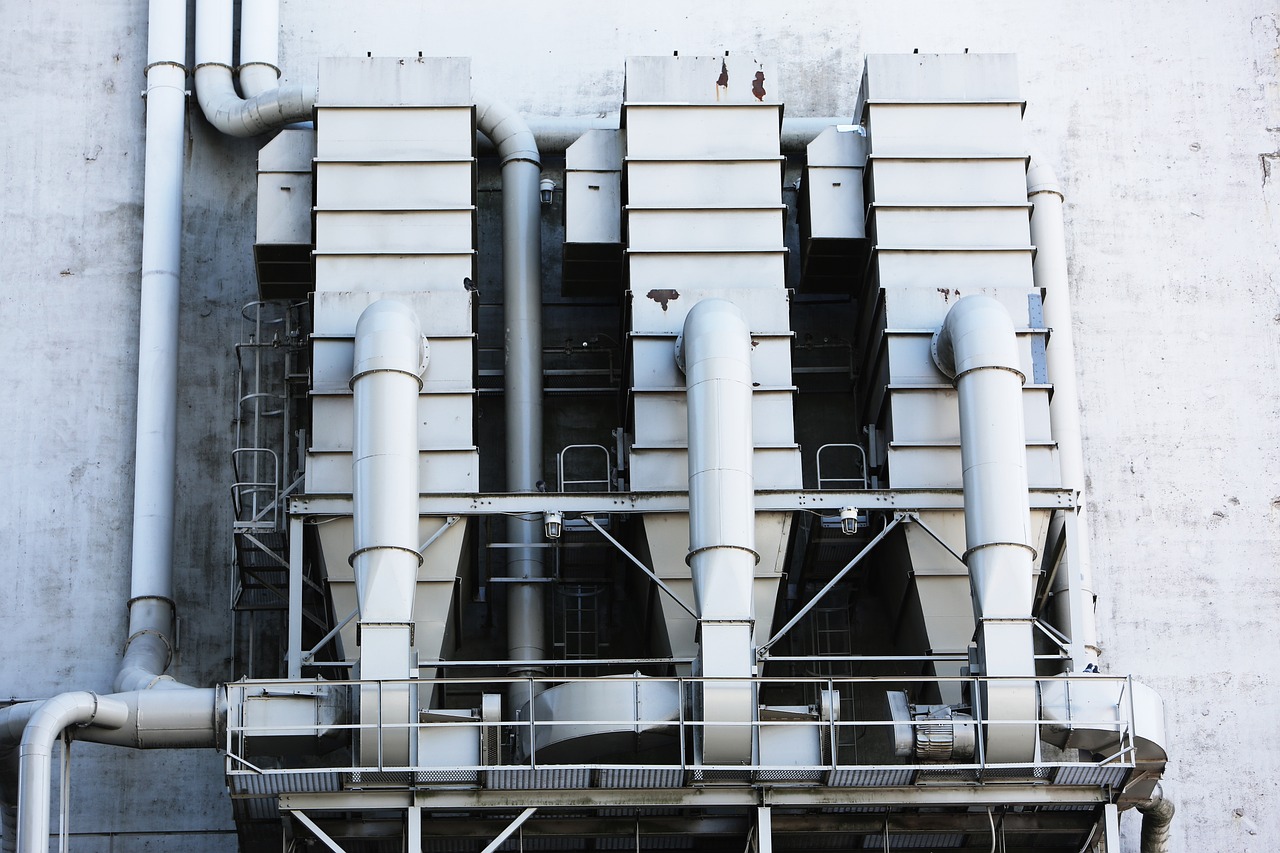
Ventilation Requirements
When it comes to ensuring safety in your basement and attic, proper ventilation is not just a luxury—it's a necessity. These spaces are often tucked away and forgotten, leading to a buildup of stale air and moisture that can create a breeding ground for mold and other hazardous conditions. So, what exactly does good ventilation entail? It’s all about ensuring that air can flow freely, allowing fresh air to replace stale air, and preventing the accumulation of humidity. Without adequate airflow, you might as well be inviting problems into your home!
One key aspect of ventilation is understanding the natural airflow in your home. Attics and basements typically require a combination of intake and exhaust ventilation to keep air circulating effectively. This means having vents that allow air to enter and exit the space. For attics, this often includes soffit vents at the eaves and ridge vents at the peak of the roof. In basements, windows can serve as an excellent source of natural ventilation, provided they can be opened safely and securely.
Additionally, you might want to consider mechanical ventilation systems if natural airflow isn't sufficient. These systems can actively draw in fresh air and expel stale air, ensuring that your basement and attic remain comfortable and safe. A simple exhaust fan can make a world of difference in areas prone to moisture. But remember, mechanical systems require regular maintenance to function properly, so keep an eye on them!
To help visualize the importance of ventilation, consider this simple table outlining the potential consequences of poor ventilation versus good ventilation:
| Ventilation Quality | Consequences |
|---|---|
| Poor Ventilation |
|
| Good Ventilation |
|
In conclusion, ensuring proper ventilation in your basement and attic is crucial for maintaining a safe and healthy environment. By understanding the airflow dynamics and implementing the right ventilation strategies, you can significantly reduce the risks associated with poor air quality. Whether through natural methods or mechanical systems, taking these steps will not only protect your home but also provide peace of mind for you and your loved ones.

Mold Prevention Strategies
Mold thrives in damp, poorly ventilated environments, making basements and attics prime targets for its growth. To keep your home safe and healthy, it’s essential to implement effective . First and foremost, controlling humidity is crucial. Aim to keep indoor humidity levels below 60%. You can achieve this by using dehumidifiers, especially in areas prone to moisture accumulation. Additionally, consider installing moisture barriers, such as polyethylene sheets, on floors and walls to prevent ground moisture from seeping in.
Another key aspect of mold prevention is ensuring adequate ventilation. Proper airflow helps to disperse moisture and reduce condensation. You can enhance ventilation by installing vents in attics and basements, or by using exhaust fans in areas like laundry rooms and bathrooms. If your attic has a roof that allows for it, consider adding gable vents or ridge vents to facilitate airflow. Remember, stagnant air is a mold’s best friend!
Regular inspections are also vital in the fight against mold. Make it a habit to check these spaces at least once a season for signs of mold or moisture. Look for discoloration on walls, musty odors, or any signs of water damage. If you detect any issues, address them immediately. Keeping a close eye on these areas can help you catch problems before they escalate.
In addition to these strategies, you should also consider the materials you use in these spaces. Opt for mold-resistant products when renovating or building. For instance, mold-resistant drywall and paints can significantly reduce the likelihood of mold growth. If you’re unsure about what materials to use, consult with a professional who specializes in mold prevention.
To summarize, here are some essential mold prevention strategies:
- Keep humidity levels below 60%.
- Use dehumidifiers and moisture barriers.
- Ensure adequate ventilation.
- Conduct regular inspections.
- Utilize mold-resistant materials.
By implementing these strategies, you can create a less inviting environment for mold, ensuring that your basement and attic remain safe and healthy for you and your family.
Q: How can I tell if I have a mold problem?
A: Look for visible signs of mold, such as discoloration on walls or ceilings, and pay attention to any musty odors. Regular inspections can help you catch mold early.
Q: What should I do if I find mold?
A: If you discover mold, it’s important to address it immediately. For small areas, you can clean it yourself using a mixture of water and detergent. For larger infestations, consider hiring a professional mold remediation service.
Q: Can I prevent mold by just using a dehumidifier?
A: While dehumidifiers are effective, they should be part of a broader strategy that includes ventilation, regular inspections, and using mold-resistant materials.

Humidity Control Techniques
Managing humidity levels in your basement and attic is not just a good idea—it's essential for maintaining a safe and healthy environment. High humidity can lead to a plethora of issues, including mold growth, structural damage, and even health problems for occupants. So, how do you keep those moisture levels in check? Here are some practical techniques that can help.
First and foremost, consider investing in a dehumidifier. These handy devices are designed specifically to reduce humidity levels in enclosed spaces. When choosing a dehumidifier, look for one that is appropriately sized for your space. For example, a small basement may only need a unit that can handle 30 pints of moisture per day, while a larger area might require one that can handle 70 pints. It's a simple yet effective way to combat excess moisture.
Another effective technique is to improve air circulation. This can be achieved by using fans strategically placed throughout the area. By increasing airflow, you can help evaporate moisture that accumulates on surfaces. Additionally, ensure that any vents in the basement or attic are unobstructed and functioning properly. A well-ventilated space is less likely to become a breeding ground for mold and mildew.
It's also important to monitor the humidity levels regularly. Investing in a hygrometer can provide you with real-time data about the moisture levels in your basement or attic. Ideally, you want to keep the humidity below 60%. If you notice levels creeping higher, it may be time to take action, whether that's running the dehumidifier more frequently or addressing any leaks that could be contributing to the problem.
Lastly, don't overlook the importance of sealing any gaps or cracks in your foundation or attic. These openings can allow outside moisture to seep in, raising humidity levels. Use caulk or spray foam to seal these areas and prevent moisture intrusion.
By employing these humidity control techniques, you can create a healthier environment in your basement and attic, ensuring that these spaces remain safe and functional for years to come.
- What is the ideal humidity level for basements and attics? Ideally, humidity levels should be kept below 60% to prevent mold growth and structural damage.
- How often should I run my dehumidifier? It depends on the humidity levels; during particularly humid days, you may need to run it continuously, while in drier months, it can be used less frequently.
- Can I use a regular fan instead of a dehumidifier? While fans can help improve air circulation, they do not remove moisture from the air like a dehumidifier does.
- How can I tell if my basement or attic has a moisture problem? Look for signs such as musty odors, condensation on walls, or visible mold growth.
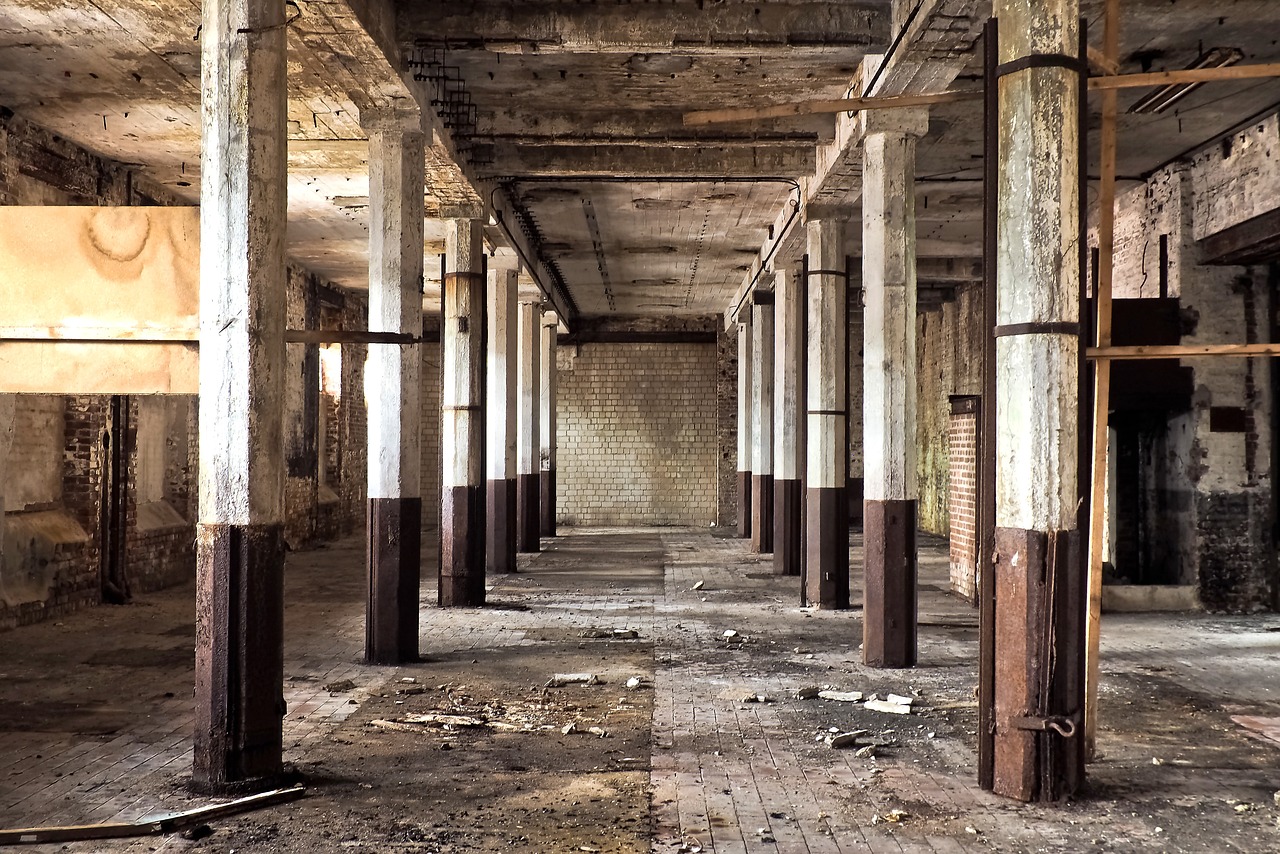
Regular Inspections
Conducting in your basement and attic is not just a good idea; it's a necessity. Think of it as a health check-up for your home. Just like you wouldn’t ignore symptoms of an illness, you shouldn't overlook potential issues lurking in these often-neglected spaces. Regular inspections help you catch problems early, saving you from costly repairs and ensuring the safety of your family.
When you venture into these areas, take a systematic approach. Start from one corner and work your way around, noting any signs of trouble. Here are some critical aspects to focus on during your inspection:
- Mold and Mildew: Look for any discoloration on walls, ceilings, or floors. Mold can spread quickly, so catching it early is key.
- Water Damage: Check for any signs of leaks or water stains. Even a small leak can lead to significant problems if left unaddressed.
- Pest Infestations: Look for droppings or nests, which can indicate unwelcome guests. Rodents and insects can cause damage and pose health risks.
- Structural Issues: Examine beams, joists, and walls for any cracks or sagging. These could be signs of serious structural concerns that need immediate attention.
It's also wise to document your findings. Keeping a detailed log of your inspections can help you track changes over time and provide valuable information should you need to call in professionals. You might even consider creating a simple table to record your observations:
| Date | Area Inspected | Findings | Action Taken |
|---|---|---|---|
| 2023-10-01 | Basement | Minor mold growth on wall | Applied mold remover |
| 2023-10-01 | Attic | Signs of water damage | Called plumber for inspection |
Remember, regular inspections should be scheduled at least twice a year, ideally in spring and fall. This way, you can address any issues before they become bigger problems, especially before the heavy rains of spring or the cold of winter. If you’re uncomfortable performing these inspections yourself, don’t hesitate to hire a professional. Sometimes it’s worth the investment to ensure everything is in tip-top shape.
In conclusion, think of your basement and attic as the hidden gems of your home. By conducting regular inspections, you can ensure they remain safe, secure, and ready for whatever life throws your way. So, roll up your sleeves, grab a flashlight, and make those inspections a part of your home maintenance routine!
Q: How often should I inspect my basement and attic?
A: It’s recommended to inspect these areas at least twice a year, ideally in spring and fall.
Q: What should I look for during an inspection?
A: Check for mold, water damage, pest infestations, and structural issues.
Q: Can I do inspections myself?
A: Yes, but if you’re unsure or uncomfortable, hiring a professional is always a good option.
Q: What should I do if I find mold?
A: Address it immediately with appropriate mold removal products, and consider consulting a professional if the problem is extensive.
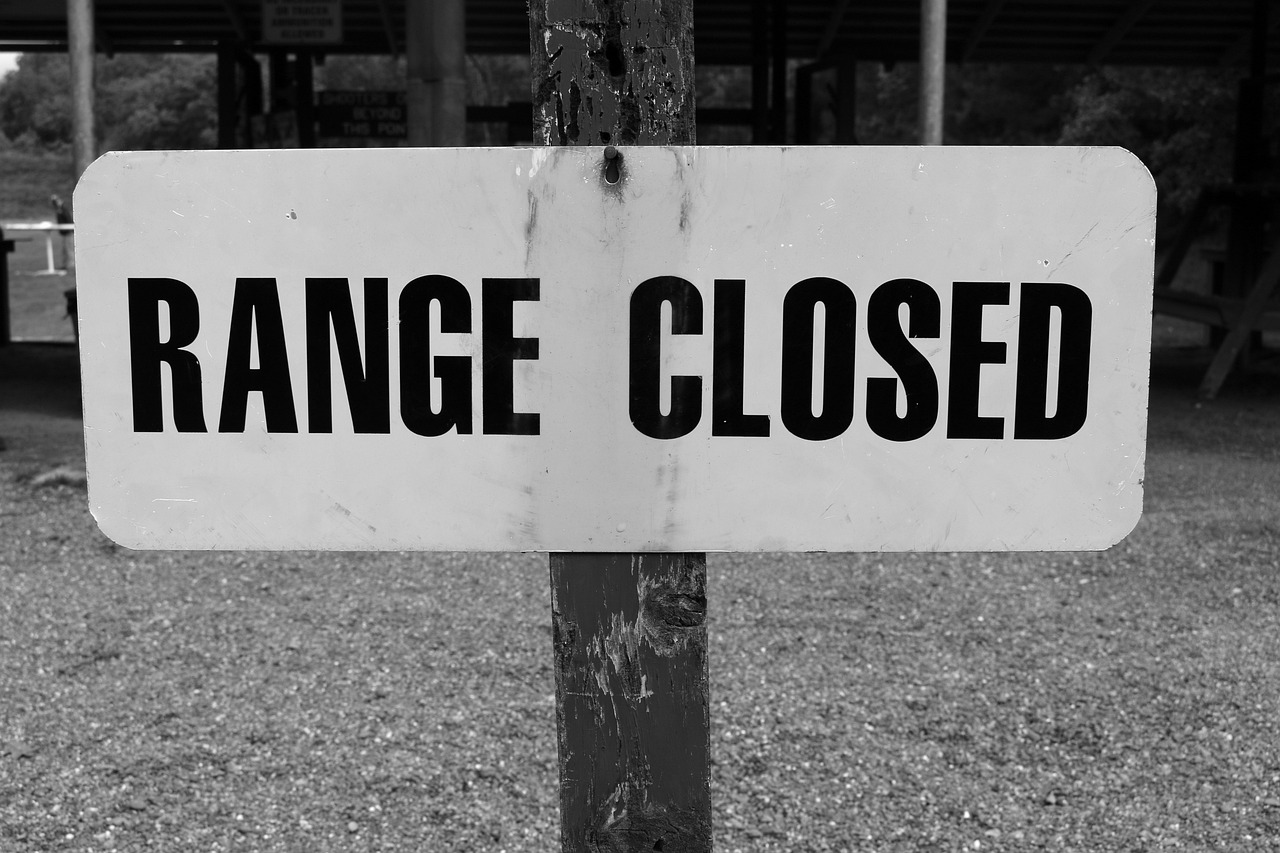
Structural Integrity Checks
When it comes to ensuring safety in your basement and attic, are paramount. These areas of your home, often overlooked, can harbor hidden dangers that may compromise the stability of your property. Regular inspections of critical components such as beams, joists, and the overall framework are essential. Think of your home as a living organism; just as we need regular check-ups to stay healthy, your house requires the same attention to maintain its strength and safety.
Start by looking at the beams and joists. These are the backbone of your basement and attic, supporting the weight of everything above them. Check for any signs of sagging or cracking, which can indicate that they are under undue stress. If you notice any irregularities, it’s wise to consult a professional who can assess the situation. Remember, a small issue today can turn into a massive problem tomorrow if left unchecked.
Next, pay attention to the foundation walls. Look for any cracks or signs of water intrusion. Water damage can weaken the foundation over time, leading to more severe structural issues. If you spot any cracks, especially those that are wider than a quarter of an inch, it’s time to take action. A structural engineer can provide insights into whether these cracks are a cosmetic issue or a sign of deeper problems.
It’s also crucial to check for signs of pest infestations. Termites and other wood-destroying insects can wreak havoc on the structural components of your home. Look for small holes in the wood, frass (termite droppings), or any signs of tunneling. If you suspect an infestation, don’t hesitate to call in pest control experts. They can help you identify the problem and recommend appropriate treatments.
Finally, consider the overall stability of the space. Walk around and observe if everything feels solid. Are there any areas that seem unstable or feel different when you walk on them? If so, this could indicate a more serious issue that needs further investigation. Regular inspections not only help identify potential problems but also give you peace of mind that your home is safe and secure.
In summary, conducting structural integrity checks in your basement and attic is a proactive way to safeguard your home. By keeping an eye on beams, joists, foundation walls, and potential pest issues, you can ensure that your living space remains a safe haven for you and your family.
- How often should I check the structural integrity of my basement and attic?
It's recommended to perform structural checks at least once a year, or more frequently if you notice any signs of damage or wear. - What are the most common signs of structural issues?
Common signs include sagging beams, cracks in walls, water damage, and signs of pest infestations. - Should I hire a professional for structural checks?
While you can perform basic inspections, hiring a structural engineer for a thorough evaluation is advisable, especially for significant concerns.
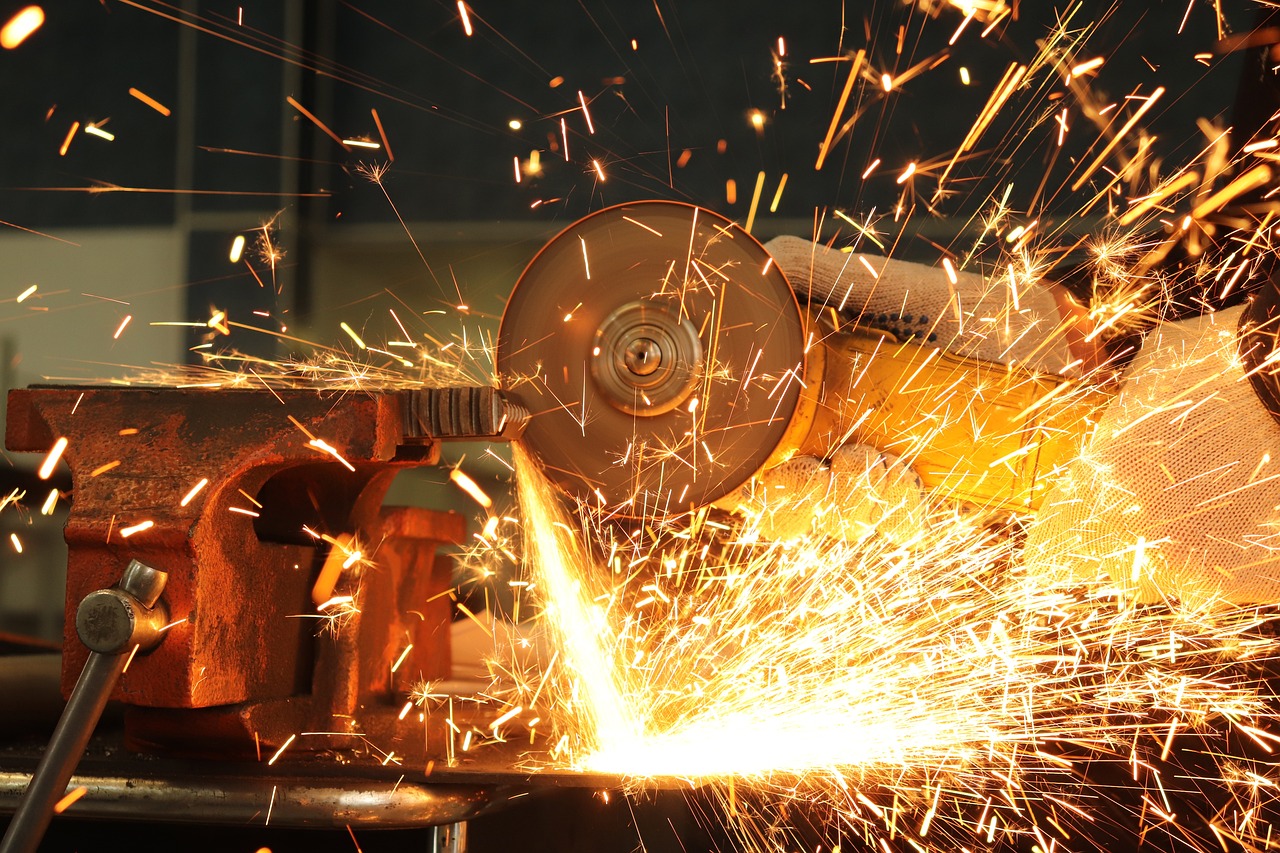
Fire Safety Measures
Fire safety is an essential consideration when it comes to ensuring the safety of your basement and attic. These spaces, often filled with stored items and insulation materials, can become fire hazards if not properly managed. One of the first steps in fire safety is the installation of smoke detectors. These devices are your first line of defense, alerting you to smoke and fire before they escalate. It's crucial to install smoke detectors in accessible locations, ideally on every level of your home, including basements and attics. Regular maintenance is equally important; you should test these detectors monthly and replace the batteries at least once a year.
Another critical aspect of fire safety is adhering to safe storage practices. Improperly stored items can heighten the risk of fire, especially in areas where flammable materials are present. For instance, consider using fire-resistant storage containers for items such as paper, fabrics, or chemicals. Additionally, it's wise to keep flammable items away from heat sources, including heaters, electrical panels, and any appliances that generate heat. By creating a clear space around these heat sources, you significantly reduce the chance of a fire igniting.
Moreover, understanding the material composition of your attic and basement can help in fire prevention. Insulation materials, for example, can vary in their fire resistance. It's advisable to choose non-combustible or fire-retardant insulation when renovating or insulating these areas. If you're unsure about the materials in your home, consider consulting a professional who can assess the situation and recommend safer alternatives.
In addition to smoke detectors and proper storage, having a fire extinguisher readily accessible in your basement and attic is a smart move. Make sure it is rated for the types of fires that could occur in these areas, such as electrical or flammable liquids. Regularly check the extinguisher to ensure it is fully charged and in good working condition. Remember, quick action can make all the difference in preventing a small fire from turning into a disaster.
To summarize, ensuring fire safety in your basement and attic requires a proactive approach. By installing smoke detectors, practicing safe storage methods, understanding your materials, and having fire extinguishers on hand, you can significantly reduce the risk of fire in these often-overlooked spaces. Your safety and that of your loved ones depend on it!
- How often should I check my smoke detectors? It's recommended to test your smoke detectors monthly and replace the batteries at least once a year.
- What should I do if I find mold in my attic or basement? It's important to address mold immediately. You can clean small areas with a mixture of water and vinegar, but for larger infestations, consider hiring a professional.
- Can I store flammable materials in my basement? It's best to avoid storing flammable materials in your basement. If necessary, ensure they are stored in fire-resistant containers and away from heat sources.
- What type of fire extinguisher should I have? A multi-purpose extinguisher (rated ABC) is suitable for most home fires, including those caused by wood, paper, and electrical equipment.

Installation of Smoke Detectors
When it comes to ensuring safety in your basement and attic, the is non-negotiable. These small devices can be the difference between life and death, alerting you to smoke and fire before they become uncontrollable. But where should you install them? Ideally, smoke detectors should be placed on every level of your home, particularly in areas where fires are more likely to start, such as basements and attics. Remember, the goal is to have a comprehensive safety net that covers all potential hazards.
It's also important to consider the type of smoke detectors you choose. There are two main types: ionization smoke detectors and photoelectric smoke detectors. Ionization detectors are generally more responsive to flaming fires, while photoelectric detectors are better at sensing smoldering fires. For optimal safety, consider using both types in your home. This way, you can ensure that you’re prepared for any kind of fire scenario.
When installing smoke detectors, follow these key guidelines:
- Install smoke detectors on the ceiling or high on the wall, as smoke rises.
- Keep them at least 10 feet away from cooking appliances to reduce false alarms.
- Test your smoke detectors monthly and replace the batteries at least once a year.
- Replace the entire smoke detector unit every 10 years.
Regular maintenance is just as important as the initial installation. A smoke detector that isn’t functioning properly is as good as having no detector at all. Conducting regular checks ensures that your devices are in working order, and you can be confident that they will alert you in an emergency. Additionally, consider integrating your smoke detectors with a home security system for added peace of mind. This can provide you with real-time notifications on your smartphone, even when you're not at home.
In summary, the installation of smoke detectors is a crucial step in safeguarding your basement and attic. By understanding the types of detectors available, adhering to installation guidelines, and committing to regular maintenance, you can significantly enhance the safety of these often-overlooked spaces. After all, a few simple precautions can make a world of difference when it comes to protecting your home and loved ones.
Q: How many smoke detectors do I need in my home?
A: It’s recommended to have at least one smoke detector on every level of your home, including the basement and attic. More detectors may be needed based on the size and layout of your home.
Q: How often should I test my smoke detectors?
A: You should test your smoke detectors monthly to ensure they are functioning correctly.
Q: What should I do if my smoke detector goes off?
A: If your smoke detector goes off, evacuate the premises immediately and call emergency services. Do not re-enter the building until it has been declared safe.
Q: Can I install smoke detectors myself?
A: Yes, smoke detectors are designed for easy installation. However, if you are unsure, it’s always best to consult a professional.
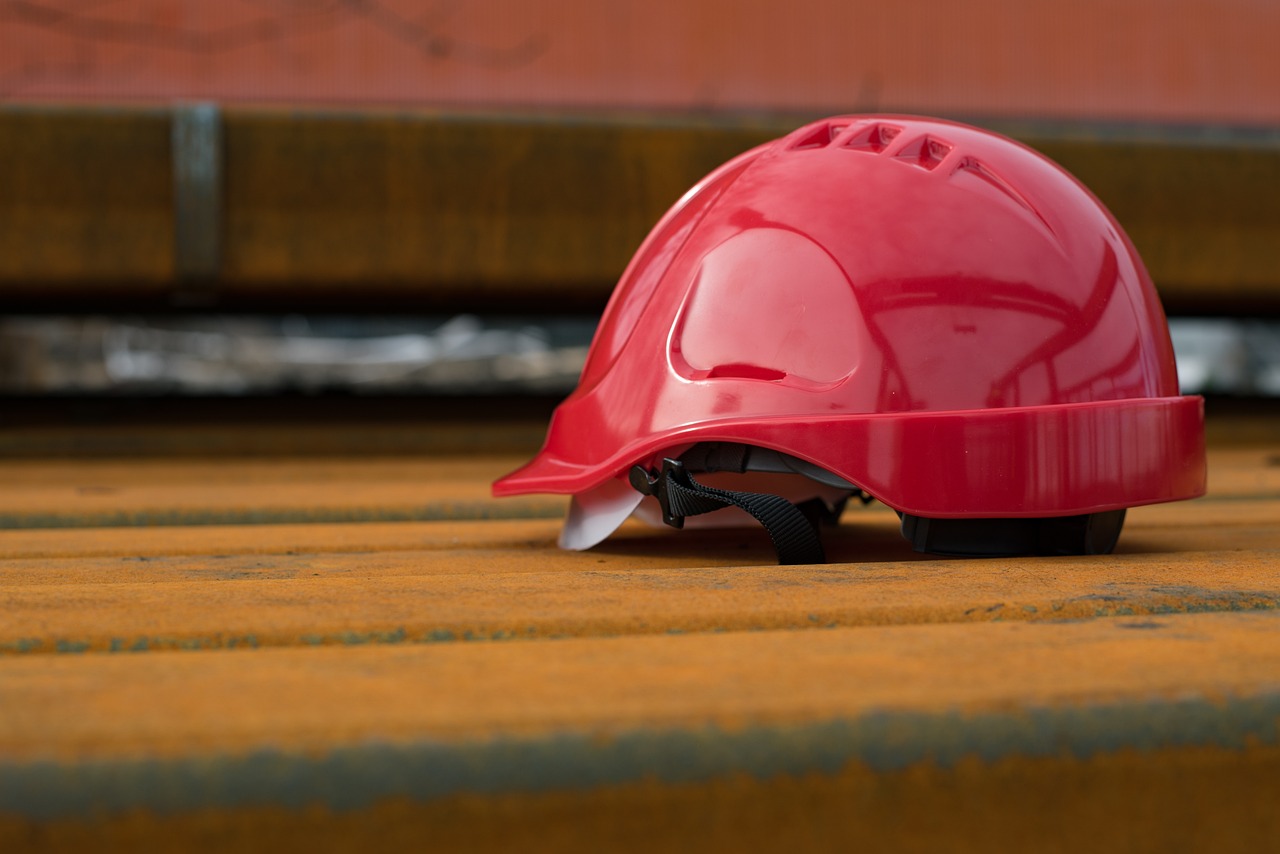
Safe Storage Practices
When it comes to ensuring safety in your basement and attic, storage practices play a pivotal role. It’s all too easy to let these spaces become a chaotic jumble of boxes, old furniture, and forgotten treasures. However, this disorganization can lead to increased risks, especially when it comes to fire hazards. Did you know that improperly stored items can actually fuel a fire? That’s right! The way you store your belongings can either protect your home or put it at serious risk.
To keep your attic and basement safe, it’s essential to adopt fire-resistant storage solutions. This means using materials that are less likely to catch fire or contribute to the spread of flames. For instance, consider using plastic bins instead of cardboard boxes, as plastic is less flammable and provides better protection against moisture. Additionally, ensure that any flammable items, such as paint, gasoline, or cleaning supplies, are stored in metal containers and kept far away from heat sources.
Another key aspect of safe storage is organization. Keeping your items neatly arranged not only makes it easier to find what you need but also minimizes the risk of accidents. Think about implementing shelving units for better visibility and accessibility. This way, you can avoid stacking heavy boxes on top of each other, which can lead to falls or injuries. It’s also wise to label your boxes clearly; this will help you quickly identify what’s inside without having to rummage through them.
Moreover, consider the height of your storage. Avoid placing heavy items on high shelves, as this can be dangerous when trying to retrieve them. Instead, store lighter items up top and heavier ones closer to the ground. This simple adjustment can make a big difference in preventing accidents.
Lastly, remember to regularly review and declutter your storage areas. Make it a habit to go through your belongings at least once a year. This not only helps you keep track of what you have but also allows you to dispose of items that are no longer needed. By doing so, you can significantly reduce the amount of clutter in your basement and attic, making these spaces safer and more functional.
- What are the best materials for storing items in my attic?
Plastic bins are ideal for their moisture resistance, while metal containers are recommended for flammable items.
- How can I prevent mold in my basement storage?
Ensure proper ventilation and use dehumidifiers to keep moisture levels low, as well as store items off the ground.
- Is it safe to store chemicals in my basement?
Yes, but always store them in fire-resistant containers and away from heat sources.

Emergency Preparedness
When it comes to ensuring safety in your basement and attic, being prepared for emergencies is not just a good idea—it's a necessity. These spaces can often be overlooked, yet they can harbor unique risks that require specific attention. Imagine being in a situation where you need to evacuate quickly; having a solid emergency plan could make the difference between safety and chaos. So, how do you create a plan that works for your home? Let's dive into the essentials!
First and foremost, developing an emergency plan tailored to your basement and attic is crucial. This plan should include clear escape routes that are easy to remember and accessible. Think of it as your personal roadmap to safety. For example, if you have a finished basement, ensure that the windows can be opened easily and that any furniture does not obstruct exits. In the attic, check that there’s a clear path to the stairs or a window that can be used as an exit in case of an emergency.
Next, it's vital to consider the supplies you'll need during an emergency. Keeping essential items in your basement and attic can save precious time when every second counts. Here’s a quick rundown of what you should have on hand:
- Flashlights and batteries: Power outages can occur, and having a reliable light source is essential.
- First aid kit: Accidents can happen, so be prepared with a well-stocked first aid kit.
- Non-perishable food and water: In case you need to stay put for a while, having some supplies ready can be a lifesaver.
- Emergency contact list: Keep a list of important phone numbers, including family members and emergency services.
Additionally, it's wise to conduct regular drills with your family. Just like fire drills at school, practicing your emergency plan can help everyone feel more confident and prepared. This practice can also help identify any weaknesses in your plan. Are the exit routes clear? Is everyone aware of where the emergency supplies are stored? These are crucial questions to ask during your drills.
Moreover, consider creating a visual map of your escape routes and where emergency supplies are located. This can be particularly helpful for children or elderly family members who might need a little extra guidance. Hang the map in a visible location, such as on the basement wall or attic door, so it’s easy to find when needed.
Lastly, it's essential to stay informed about any potential emergencies that could affect your area, such as severe weather or local hazards. Subscribing to local emergency alerts or weather notifications can keep you in the loop. Being proactive can help you prepare for any situation that arises, ensuring that you and your family remain safe no matter what.
- What should I include in my emergency kit? Your emergency kit should have flashlights, batteries, a first aid kit, non-perishable food, water, and an emergency contact list.
- How often should I practice my emergency plan? It's recommended to practice your emergency plan at least twice a year to ensure everyone knows what to do in case of an emergency.
- Where should I store my emergency supplies? Keep your emergency supplies in easily accessible locations in both your basement and attic, ensuring that everyone in your household knows where they are.

Creating an Emergency Plan
When it comes to ensuring safety in your basement and attic, having a well-thought-out emergency plan is crucial. Think of your emergency plan as a roadmap; it guides you through the chaos of unexpected situations, ensuring that you and your loved ones know exactly what to do when the unexpected strikes. Start by assessing the risks specific to these areas of your home. Is your basement prone to flooding? Does your attic have limited escape routes? Understanding these risks helps you tailor your plan effectively.
Begin by identifying escape routes from both the basement and attic. Consider the layout of your home and mark the safest and quickest paths to get outside. It’s wise to have multiple routes in case one becomes blocked or unsafe. Practice these routes with your family, so everyone knows how to react in an emergency. Just like a fire drill at school, a little practice can make a world of difference when the adrenaline kicks in.
In addition to escape routes, you should also designate a meeting point outside your home. This is a safe space where everyone can regroup after evacuating. It could be a neighbor’s yard, a nearby park, or any location that is easily recognizable. Having a designated meeting point helps ensure that everyone is accounted for and reduces confusion during a stressful time.
Next, consider creating a list of essential supplies to keep in your basement and attic. This list could include:
- Flashlights and extra batteries
- First-aid kits
- Non-perishable food and water
- A fire extinguisher
- Emergency blankets
Having these items readily available can make a significant difference in emergencies. Store them in easily accessible containers, and make sure everyone in your household knows where to find them. You might even want to consider a backup communication plan in case your phones are out of service. This could involve having a designated friend or family member outside your area to contact in case of an emergency.
Finally, don’t forget to review and update your emergency plan regularly. Life changes, and so do the risks associated with your home. Whether you’ve made renovations, added new family members, or changed your routine, it’s essential to keep your plan current. Schedule a time every six months to sit down with your family and go over the plan, making adjustments as necessary. Think of it as giving your plan a little tune-up to ensure it runs smoothly when you need it most.
In conclusion, creating an emergency plan for your basement and attic is not just a precaution; it’s a necessity. By taking the time to prepare, you’re not only safeguarding yourself but also providing peace of mind for your loved ones. Remember, in emergencies, knowledge and preparedness can be your best allies.

Essential Supplies to Keep
When it comes to ensuring safety in your basement and attic, being prepared with the right supplies is absolutely crucial. Think of your basement and attic as a safety net; if something goes wrong, having the necessary tools and resources on hand can make all the difference. Imagine being in a situation where an emergency strikes, and you find yourself scrambling around, trying to gather what you need. Sounds stressful, right? To avoid that chaos, let’s dive into what essential supplies you should keep in these often-overlooked spaces.
First and foremost, consider having a well-stocked emergency kit. This kit should include basic first-aid supplies, flashlights with extra batteries, and a portable phone charger. Picture yourself in the dark, needing to find a flashlight, only to realize the batteries are dead. It’s a nightmare scenario! Therefore, ensuring that your emergency kit is up-to-date and easily accessible is vital.
In addition to the emergency kit, think about including items that can help you manage unexpected situations. For example, a fire extinguisher is an absolute must. You never know when a small fire could ignite, and having a fire extinguisher on hand can help you tackle it before it escalates. Furthermore, consider keeping a multi-tool or a basic toolkit nearby. This can be handy for quick repairs or adjustments, especially if you notice something amiss during your regular inspections.
Another essential supply to keep is a moisture meter. Since basements and attics are prone to dampness, monitoring moisture levels can help you catch potential mold issues before they become a significant problem. Regularly checking these levels allows you to take preventive measures, ensuring a healthy environment for you and your family.
Additionally, storing some basic cleaning supplies can go a long way. Keeping a few bottles of mold and mildew cleaner, along with some rags and gloves, can help you maintain these spaces and ensure they remain safe and healthy. After all, prevention is always better than cure!
Lastly, let’s not forget about documentation. Keeping important documents, such as insurance papers and emergency contact lists, in a waterproof container can save you a lot of trouble in case of flooding or other disasters. Imagine needing to access crucial information, only to find it damaged and unreadable. It’s a small step that can lead to significant peace of mind.
In summary, keeping essential supplies in your basement and attic is not just a good idea; it's a necessity. By being proactive and ensuring that you have the right tools and resources at your fingertips, you can protect your home and loved ones from unforeseen emergencies. So, take a moment to evaluate your supplies—are you prepared?
Q: What should be included in an emergency kit for the basement and attic?
A: Your emergency kit should include basic first-aid supplies, flashlights with extra batteries, a portable phone charger, and a fire extinguisher. You may also want to include non-perishable food items and bottled water for extended emergencies.
Q: How can I prevent mold growth in my basement and attic?
A: To prevent mold growth, ensure proper ventilation, control humidity levels using dehumidifiers, and conduct regular inspections for moisture. Keeping cleaning supplies on hand can also help you tackle any issues promptly.
Q: Why is it important to have a moisture meter?
A: A moisture meter helps you monitor humidity levels in your basement and attic, allowing you to catch potential mold issues early and take preventive measures to maintain a healthy environment.
Q: What should I do if I find mold in my basement or attic?
A: If you find mold, it's crucial to address it immediately. Use appropriate cleaning supplies to remove the mold, ensure proper ventilation, and consider consulting a professional if the mold covers a large area.
Frequently Asked Questions
- What are the common hazards in basements and attics?
Common hazards in basements and attics include poor ventilation, mold growth, and structural issues. These areas are often neglected, making them prone to moisture buildup and potential safety risks.
- How can I improve ventilation in my basement or attic?
To improve ventilation, consider installing vents, using exhaust fans, and ensuring that windows can be opened. This helps maintain air quality and prevents moisture accumulation.
- What are effective mold prevention strategies?
Effective mold prevention strategies include controlling humidity levels, regularly inspecting for leaks, and ensuring proper airflow. Using dehumidifiers can also significantly reduce moisture in these spaces.
- How often should I inspect my basement or attic for mold?
It's advisable to conduct inspections at least twice a year, or more frequently if you notice signs of moisture or water damage. Early detection can prevent extensive mold growth.
- What should I check for during structural integrity assessments?
During structural assessments, check beams, joists, and any signs of sagging or damage. Look for cracks in walls or ceilings, as these can indicate serious structural issues.
- What fire safety measures should I take in these areas?
Install smoke detectors, keep fire extinguishers accessible, and practice safe storage by keeping flammable materials away from heat sources. Regularly check and maintain all fire safety equipment.
- Where is the best place to install smoke detectors?
Smoke detectors should be installed on every level of your home, including basements and attics. Make sure they are placed near sleeping areas and in hallways for optimal safety.
- What essential supplies should I keep in my basement or attic for emergencies?
Essential supplies include a flashlight, batteries, a first aid kit, non-perishable food, water, and a whistle. These items can be crucial in case of an emergency.
- How do I create an effective emergency plan for my basement or attic?
To create an effective emergency plan, identify escape routes, establish a meeting point, and ensure all family members are familiar with the plan. Regularly review and practice the plan to ensure everyone is prepared.



















